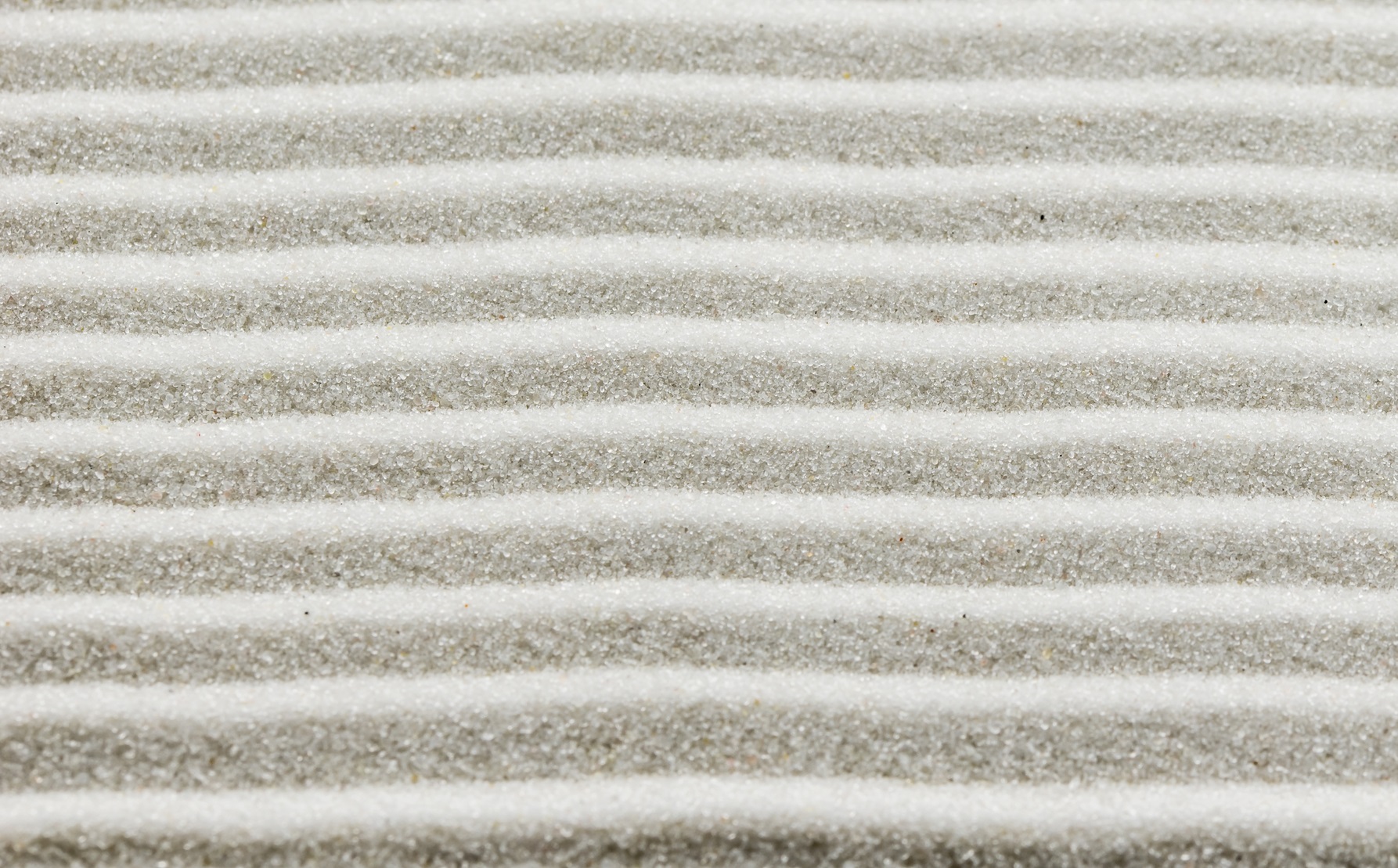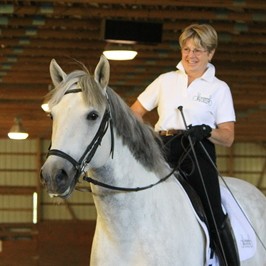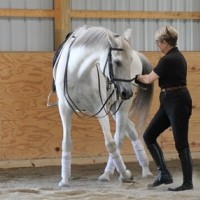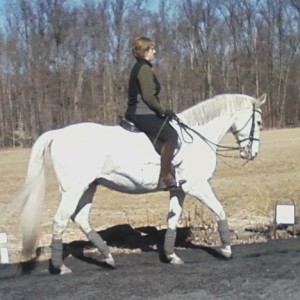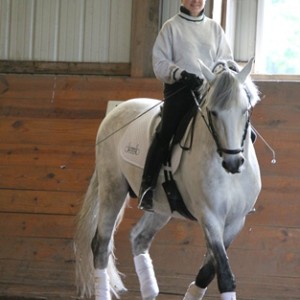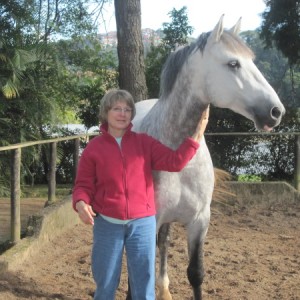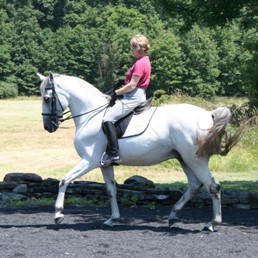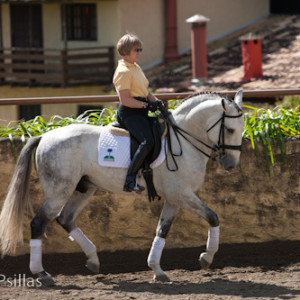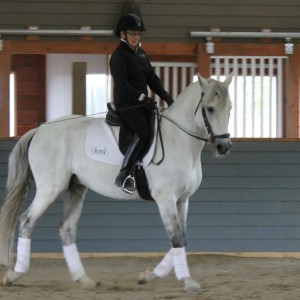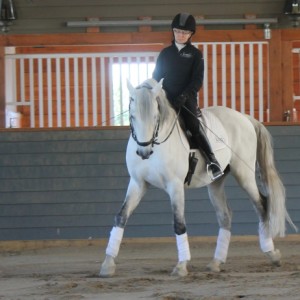Dominique Barbier Clinics
A Clinic with Dominique Barbier,
author of Dressage For The New Age
by Nancy Clarke
** For more info on clinics with Dominique Barbier in the NJ area, **
** visit www.barbiernj.com **
It is hard to miss the mustache and ponytail, but the most unusual thing about Dominique Barbier, and about his clinics, is the extraordinary rapport that he establishes with each horse within minutes of introduction. His philosophy is completely about the horse. About the horse as teacher, about the horse wanting to know his place, about the horse wanting to have a partner. This emphasis on the horse means that the emphasis is not on what we do to the horse, it is about what we do with the horse without pushing, pulling, or special gadgets. It is not a formulaic approach.
The three day format of the clinics has a particular progression: day one is to learn about the horse, day two is to learn how to be with the horse, day three is to dance with the horse. Each of the three days is divided into two sessions: in the morning Dominique works with each of the horses, up to eight of them, individually longing and working them in hand before riding them. In the afternoon, the student works with the horse, longing, work in hand and riding.
The longing and work in hand are the cornerstones of the program. The longing technique is different: the longe line is run through the bit ring and attached to the girth on the same side. Only one side rein is used, adjusted so that the horse is going on the bit and in balance. The horse discovers for himself the on the bit balance. Dominique sends the horse really forward at the click of the tongue, backed up with a crack of the longe whip is case the point was missed. From the very start the idea of the rider being #1 and the horse #2 is established. For horses that thought they could run the show, meeting Dominique comes as a surprise. When they realize they do not have to be in charge and can go back to being the horse, they relax.
Work in hand follows longing. It is done in four track shoulder-in position with angle and head height appropriate to the horse. Its goal is the suppling of the shoulders and hips. And also continues the #1 vs #2 positioning as the rider may walk into the horse’s space but not the reverse. Horses stiff under saddle are shown to be stiff in hand as well. The work in hand explains the shoulder- in concept to the horse, without the rider’s interference.
The Longing/Work in Hand is central to the training process as it allows the horse to learn about being on the bit without rider interference, and it begins each session’s work. Beyond the obvious training value, it changes the nature of the horse/rider relationship. It is more intimate and permits the rider to truly see the horse, how he moves, where he is stiff, how he is that day. Dominique rides every horse that comes to his clinics and with this basis he knows what he will find when he mounts. Watching horses and riders over the three days you can see them developing balance and confidence faster than one would think possible. From the 3 yr old Thoroughbred at his first clinic to the quarter horse switching from western pleasure to the combined training and dressage horses, the changes are real, and the technique is straightforward enough to be taken home without worry.
Watching Dominique ride is an education in lightness. He uses is own saddle when he rides, and it works with all the horses. He carries two whips. The horse is be on the bit from the first stride and walking forward from his loosened back, not legs.. The same click used in longing is used under saddle and means the same thing, forward now. A tap of the whip reminds if needed. Pushing legs are not allowed; it is the horse’s job to go forward, the rider to provide direction through visualization, knowing what he wants and staying focused. Shoulder-in and haunches-in are the key movements for all the horses. He asks the horse to stay light and in balance. And he works with the horse as he finds him that day, no matter what the level.
Dominique does not talk as he rides, he is busy listening to the horse. In between rides, anyone is free to ask any question. He does not lecture but rather conveys a desire to have the students listen to their horses and really feel the horse beneath them. His is not an easily defined formula of aids. It is rather a way of being with the horse that presupposes respect and communication, balance and trust. The Student will be told to put the little fingers on the saddle and keep them there to prevent floating hands that are unsteady, and to shorten the rein and keep the horse on the bit. As there is no pushing, so is there no pulling. The upper body should be back and the back loose. By the third day the flow is amazing as both horse and rider realize how little it takes to dance smoothly together.
On the middle day of the clinic, there is a lunch break followed by the afternoon session when the student receives a private lesson. Questions following each ride are encouraged. The clinic is friendly and informal, as is Dominique. He is remarkably accessible and wants to answer questions rather than give a lecture. His 25 year equine background is broad, encompassing jumpers and eventing as well as dressage. He studied in France, England, and with the great Nuno Oliviera in Portugal. His clinics are not limited to dressage riders. He sees his work as a foundation for all disciplines because it emphasizes balance and lightness in the horse.
If possible, it is useful to have read Dominique Barbier’s book Dressage for the New Age or seen his videos (available in the ESDCTA library) before coming to a clinic to get a feel for the depth of his philosophy regarding training horses. The book is available at the clinics.
The only equipment used in the clinic is a longe line, side reins, longe whip, two dressage whips, a snaffle bit (Baucher preferred), and protective boots or wraps. All levels, breeds and disciplines are welcome.
